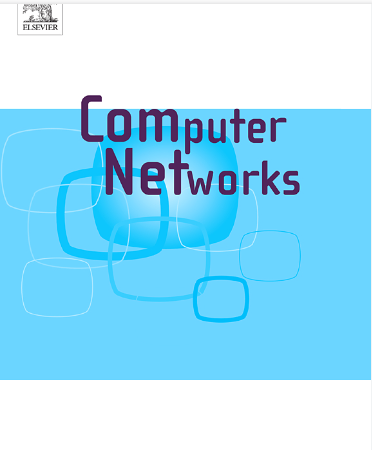MSTFCAN: Multiscale sparse temporal-frequency cross attention network for traffic prediction
IF 4.4
2区 计算机科学
Q1 COMPUTER SCIENCE, HARDWARE & ARCHITECTURE
引用次数: 0
Abstract
In contemporary computer networks, precise prediction of network traffic is essential for efficient resource allocation, congestion control, and the delivery of high-quality services. Some models decompose raw traffic data into seasonal and trend components and employ distinct modeling strategies for each forecasting task. Nevertheless, these models fail to fully leverage multiscale information to enhance the representation of seasonal and trend components. Fine-grained data at larger scales more accurately captures seasonal features with inherent periodicity, thereby significantly enhancing coarse-grained traffic characteristics. Moreover, the coarse-grained feature effectively guides the overall trajectory of the fine-grained feature within the trend component and mitigates the impact of noise on them. In addition, current models suffer from a lack of effective integration between local and global attention features, which hinders their ability to extract complex traffic features in high-precision prediction scenarios. To tackle these challenges, we introduce an innovative framework known as the Multiscale Sparse Time-Frequency Cross Attention Network (MSTFCAN). This framework proposes a mechanism for enhancing and fusing multi-scale trend and seasonal features, while utilizing the sparse time-frequency cross attention mechanism to extract and fuse time-domain and spectral information at each scale. The MSTFCAN framework introduces Multichannel Variable Convergence (MCVCon) modules, Multiscale Seasonality-Trend Decomposition Fusion Engine (MSDFE), and Sparse Time-Frequency Cross-Attention Unit (STFCAU) to bolster the model’s capability of feature extraction and variable interactions for raw flow data. To demonstrate the superior performance of the MSTFCAN framework in terms of prediction accuracy, extensive experiments have been conducted on real-world datasets.
求助全文
约1分钟内获得全文
求助全文
来源期刊

Computer Networks
工程技术-电信学
CiteScore
10.80
自引率
3.60%
发文量
434
审稿时长
8.6 months
期刊介绍:
Computer Networks is an international, archival journal providing a publication vehicle for complete coverage of all topics of interest to those involved in the computer communications networking area. The audience includes researchers, managers and operators of networks as well as designers and implementors. The Editorial Board will consider any material for publication that is of interest to those groups.
 求助内容:
求助内容: 应助结果提醒方式:
应助结果提醒方式:


